The growth of the assortment of goods in the furniture market has turned a total shortage into a problem of choice. The queues for the desired purchases have disappeared. But a new difficulty has appeared - to choose the most suitable furniture model, material of manufacture, size, color and so on in a competent and balanced way. Especially when it comes to a children's writing desk for a student. It should be comfortable, of high quality and ergonomic. This is the only way a child can graduate from school without myopia, scoliosis, allergies and other consequences of uncomfortable pastime for lessons.
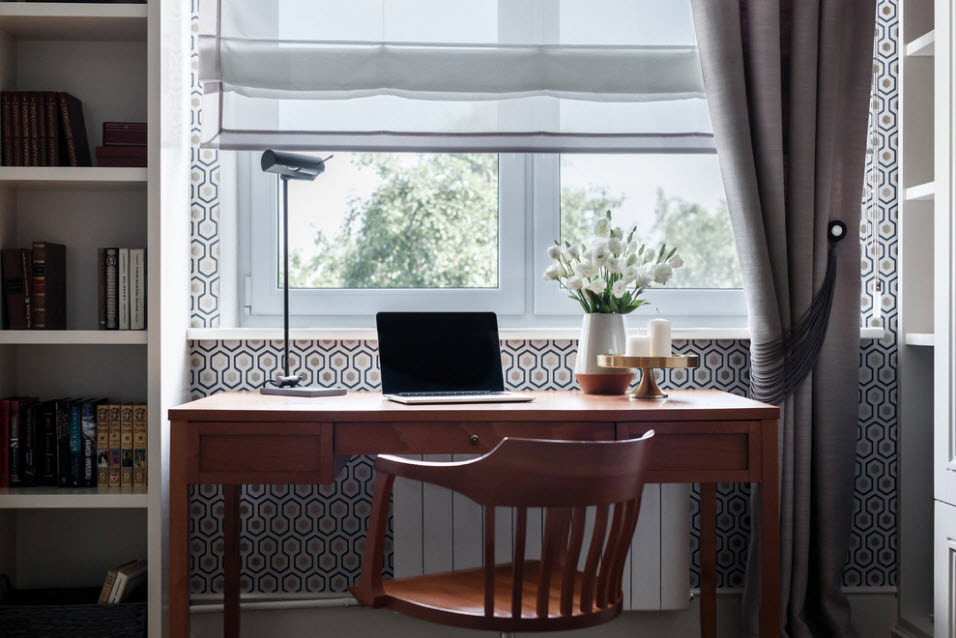
When choosing a desk for a student, it is necessary to take into account the size, functionality and design of the furniture.
Features of choosing a desk for a children's room
Content
- Features of choosing a desk for a children's room
- Varieties of desks for a child
- Corner table
- Table transformer
- Rectangular table
- Table materials
- Chipboard
- MDF
- Solid wood
- Plastic
- Options for the location of the desk in the interior of the children's room
- Video: Important rules for choosing a table for a child
- Photos of the design of the nursery with a desk
Competent arrangement of the workplace for a schoolboy includes the necessary brightness of lighting, comfort during classes, the presence of the required number of shelves, drawers, and so on. A children's desk can satisfy all important requirements, if it is correctly selected and installed in a suitable place.
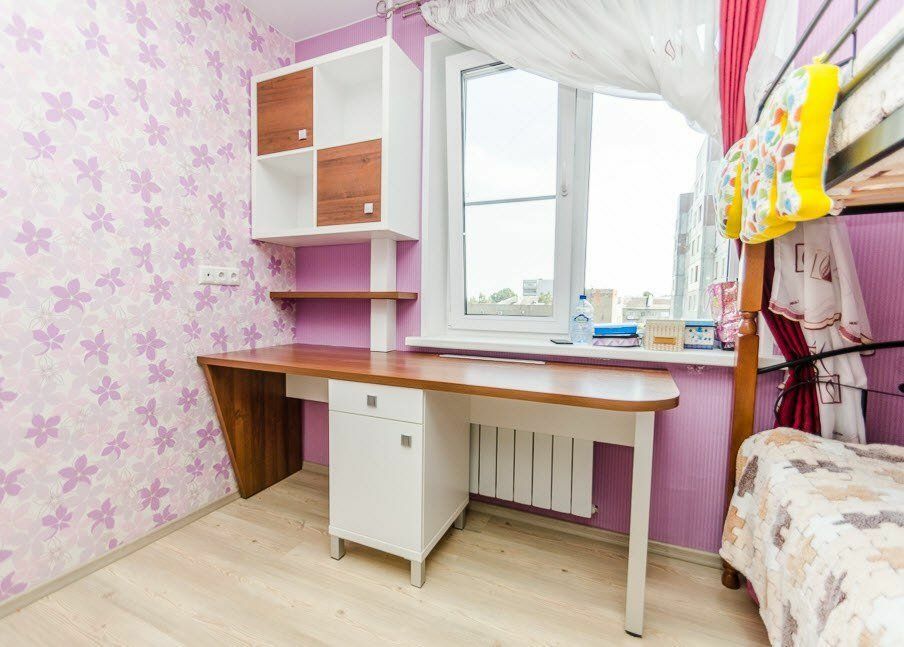
The children's desk can be equipped with various functional elements that make it more convenient and practical
The main selection criteria are as follows:
- working surface depth from 0.6 to 0.8 m;
- tabletop widths - from 1 m;
- the parameters of the niche under the table are at least 0.5 x 0.5 m;
- the distance from the knees to the table top is from 15 cm;
- non-toxic materials of manufacture;
- high-quality fittings in transformers;
- the presence of shelves and cabinets with drawers;
- the ability to adjust the height of the legs is welcome.
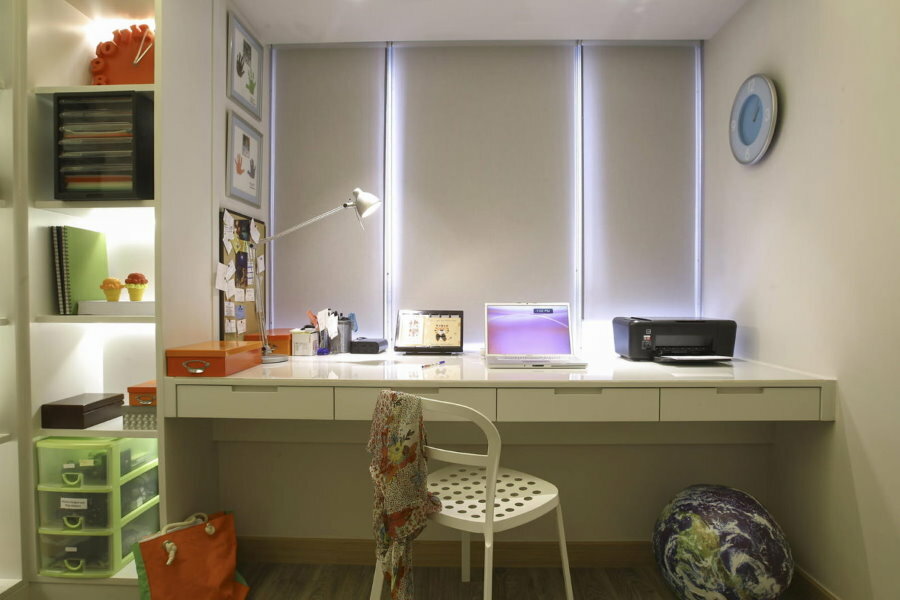
When choosing a suitable model of a desk, take into account the age of the child
Varieties of desks for a child
After examining the basic requirements for a children's lesson table, you can think about the models available. The following varieties are popular today:
- Standard rectangular. A familiar design reminiscent of a school desk or home writing single-sided or double-sided table.
- Children's computer. 2-in-1 option, provided with ample space for classes, and all the necessary blocks for installing and using a PC.
- Table transformer. Model with the ability to adjust the height, tilt angle of a folding or fixed tabletop, etc.
- Angular. The best choice for a small children's room. It can be standard written or computer-based.
- Orthopedic. Option with a worktop with a special cut-out. Designed for the prevention of spinal curvature and posture correction.
- School corner. A complex set, consisting of a table on the first floor, a sleeping bed on the second, as well as hanging shelves and side tables, a bookcase and more.
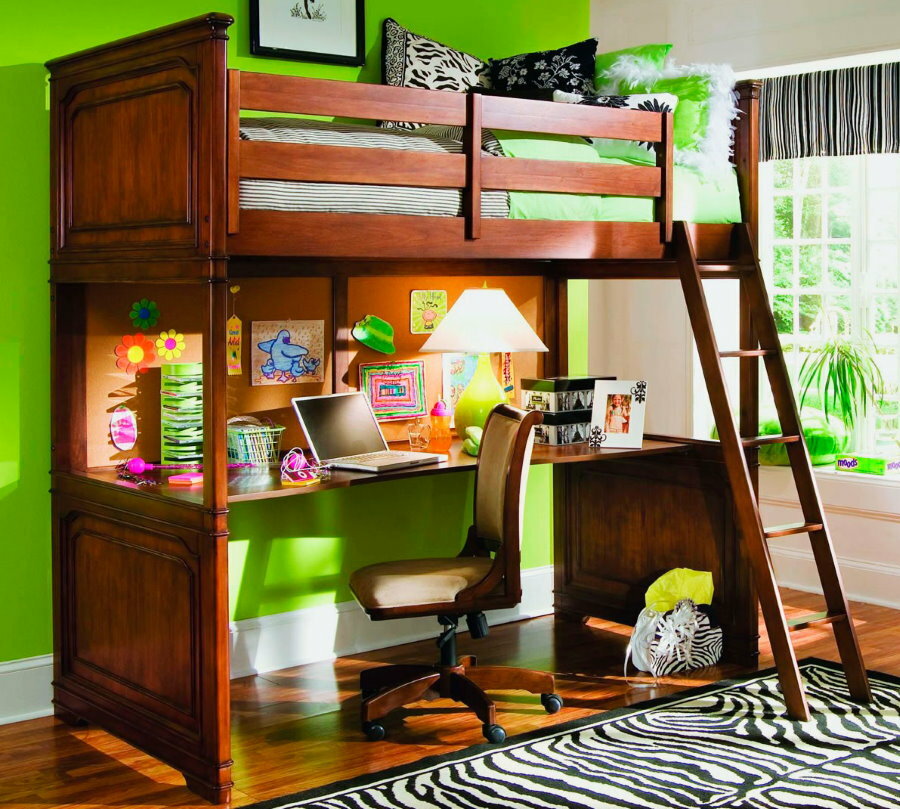
A loft bed with a desk on the lower tier is a great solution for a small children's room
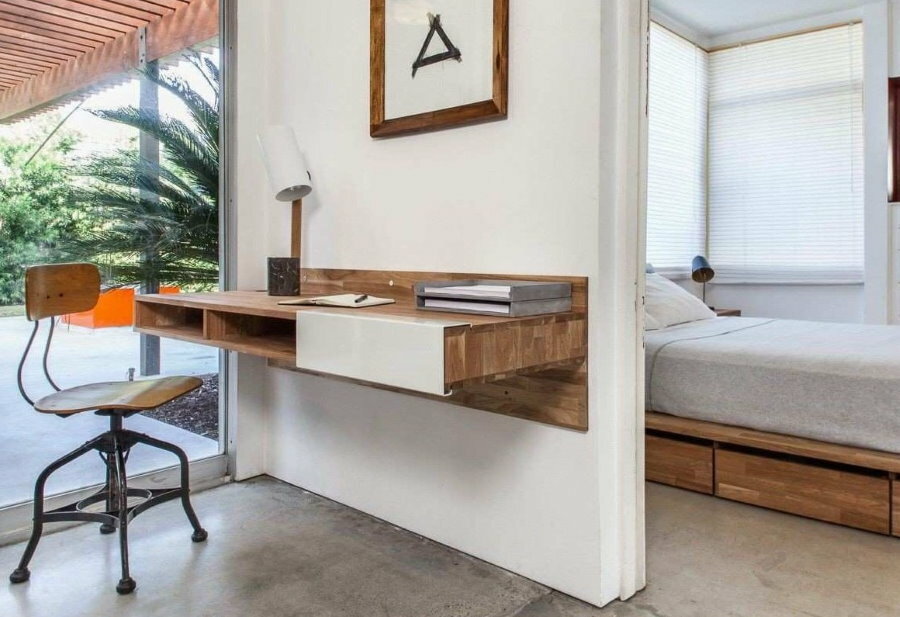
Another worthy solution for a small room can be a hanging table.
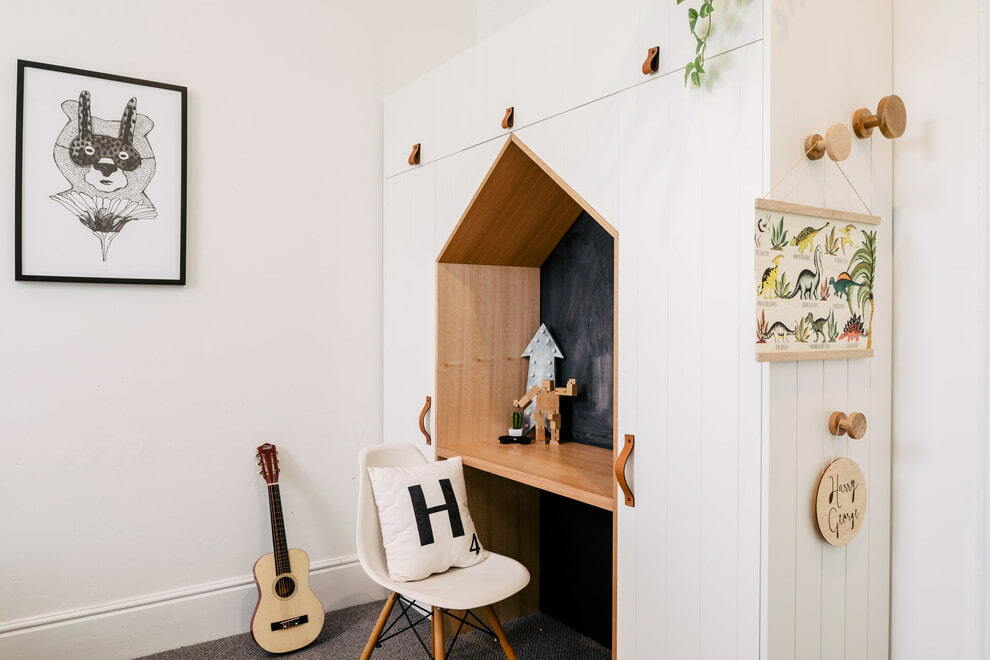
Built-in table - another option for saving space in the children's room
Corner table
Corner children's desks for schoolchildren are comfortable and practical L-shaped structures with a base, a tabletop, a pedestal (or pedestals) and additional hanging modules or superstructures. Such models are convenient because they allow you to save space in tight spaces.
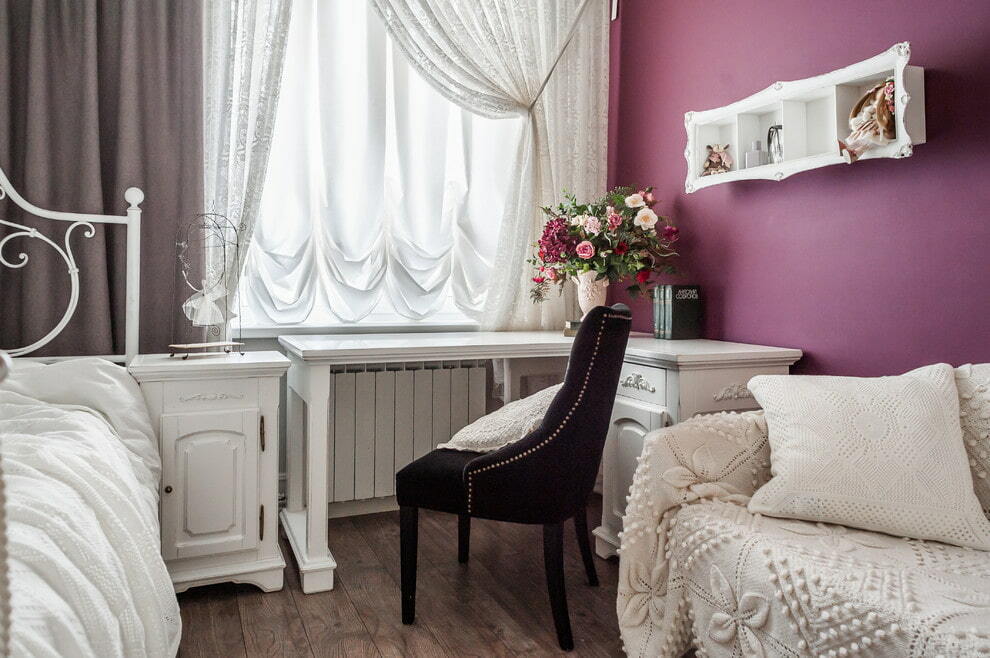
The L-shaped table will increase the workplace without cluttering the room space
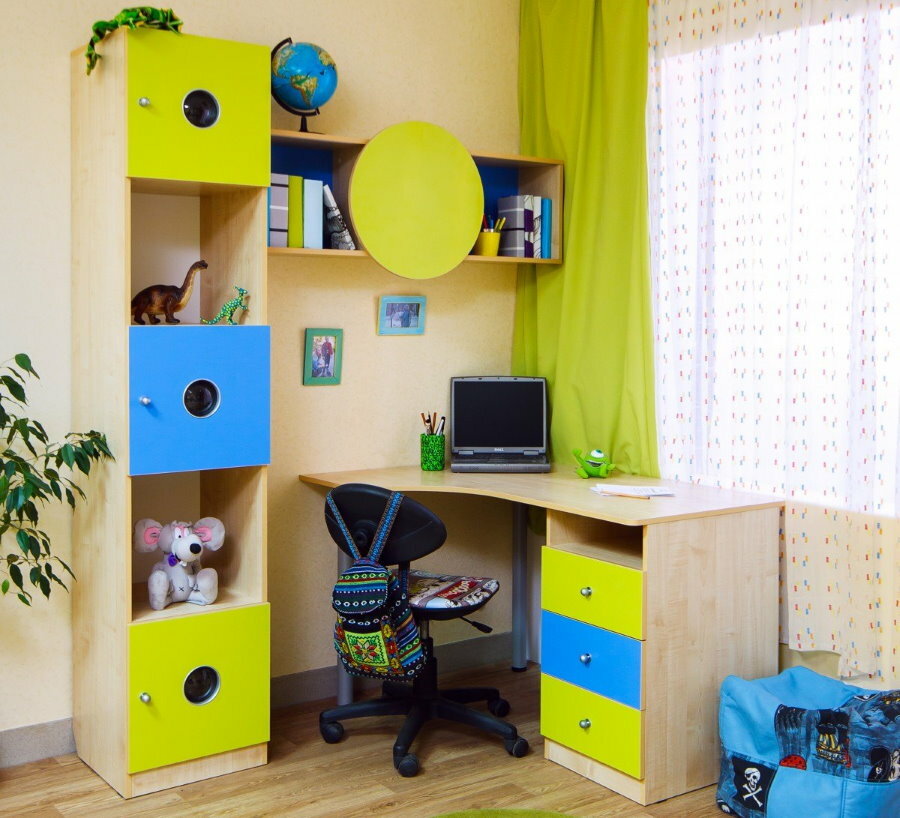
A practical solution would be a corner model, which will be used as a desk and as a computer
As a rule, corner structures combine two different zones (computer and educational), therefore they are considered indispensable in a house with two children. Most often they are represented by modular designs, which are very functional: as the child grows up, the angular the table can be complemented with matching shelves, compact cabinets and other elements from the same series.
Table transformer
The essence of the transforming table is the ability to adjust all the main parts (frame, legs, tabletop) as the child grows up. If such a piece of furniture for a children's room is made of high-quality material with good durable fittings, the table will last much longer than 11 years of study. In this case, all the time will be "in good time".
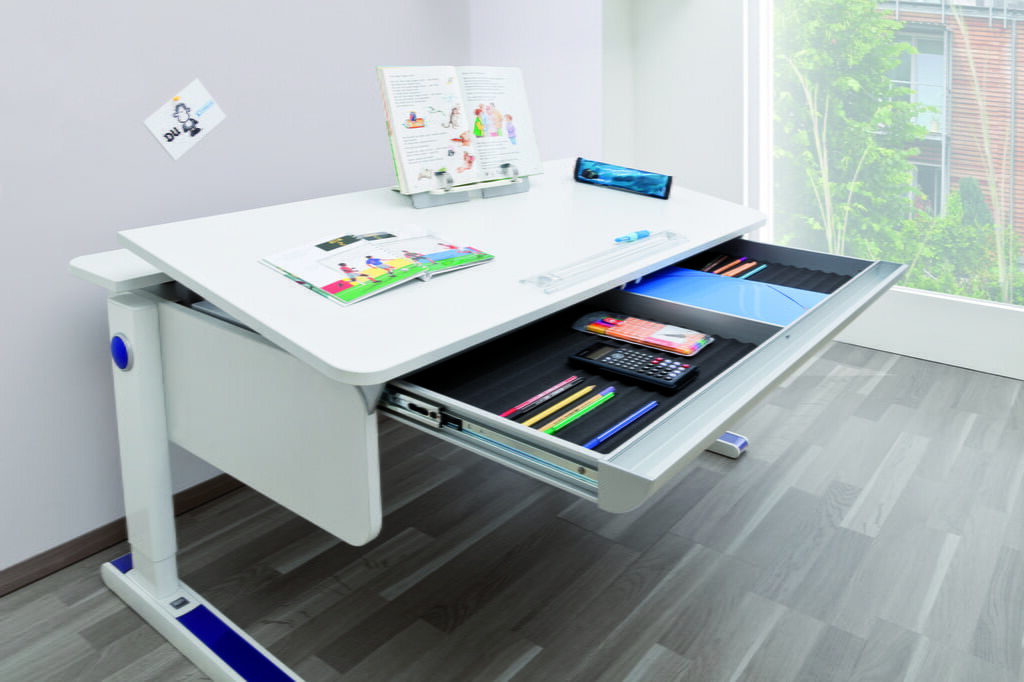
Desk-transformer with adjustable height and tilt angle of the table top
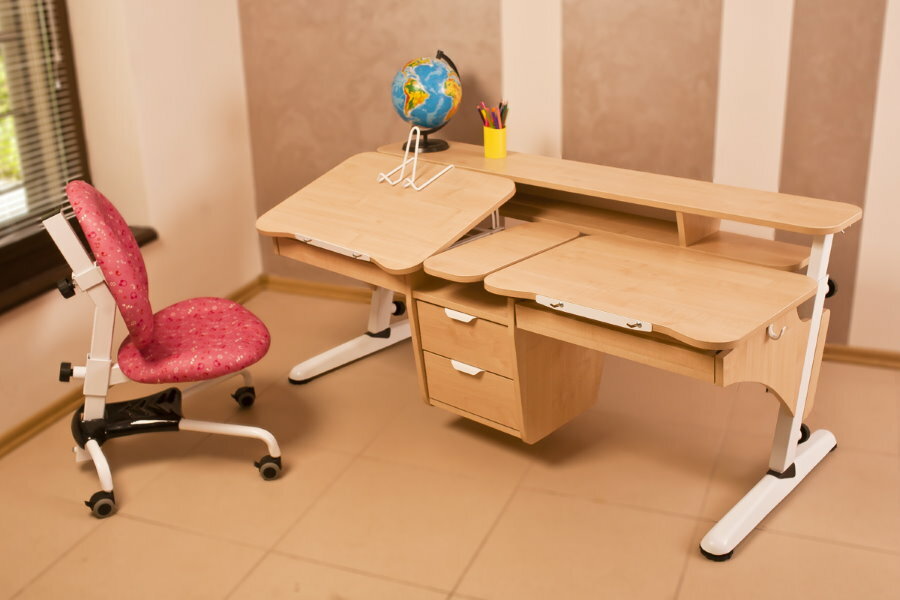
Convenient version of a transforming table for two children
Unlike smart "growing" models, in transformers, not only the height of the legs changes, but also the angle of inclination of the working surface. That allows you to choose the best option for maintaining your posture at every age.
Rectangular table
The classic rectangular design is the most popular option in modern children's rooms.
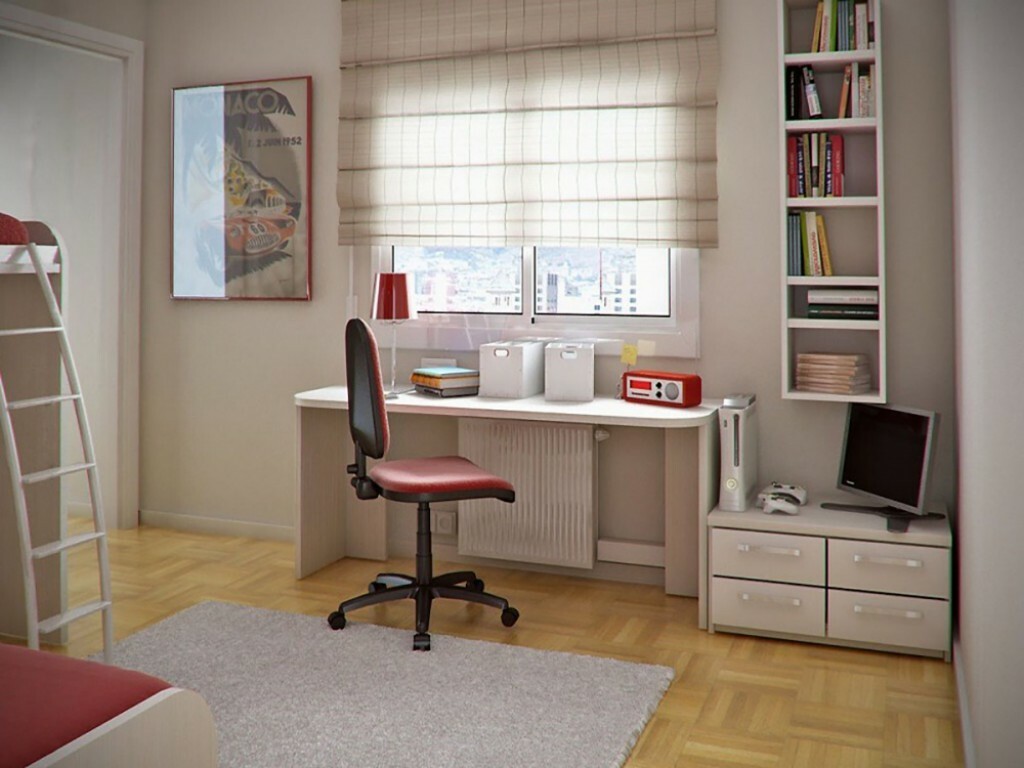
Simple laconic model without any additions
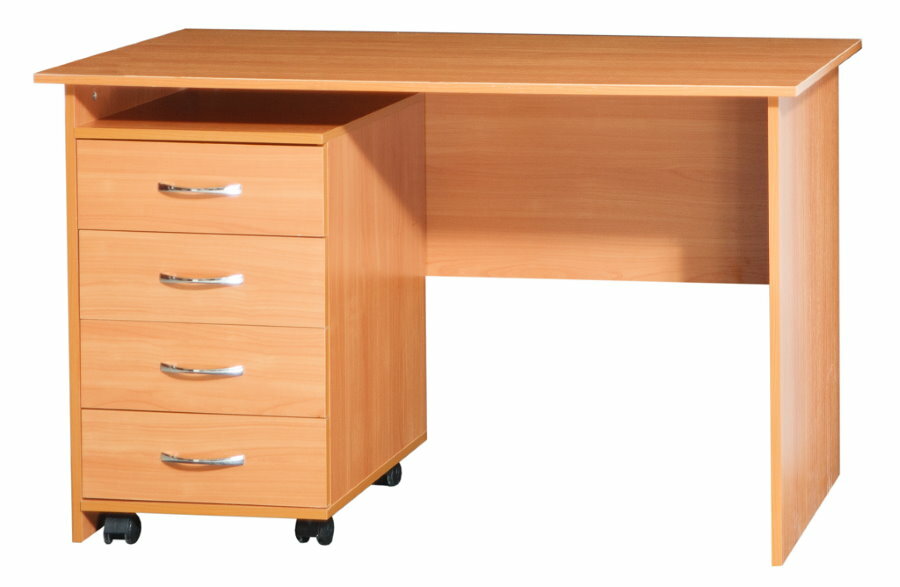
Rectangular desk with mobile unit on wheels
Such a table:
- firstly, it saves space when properly positioned by the window;
- secondly, functional and roomy when choosing a two-bollard model;
- thirdly, it allows you to complement the workplace with suitable hanging racks, add-on modules, etc .;
- fourthly, it is absolutely safe, provided that there are no sharp corners and environmentally friendly materials.
The finished rectangular table outwardly resembles a school desk, which subconsciously adjusts the child to the desired mood.
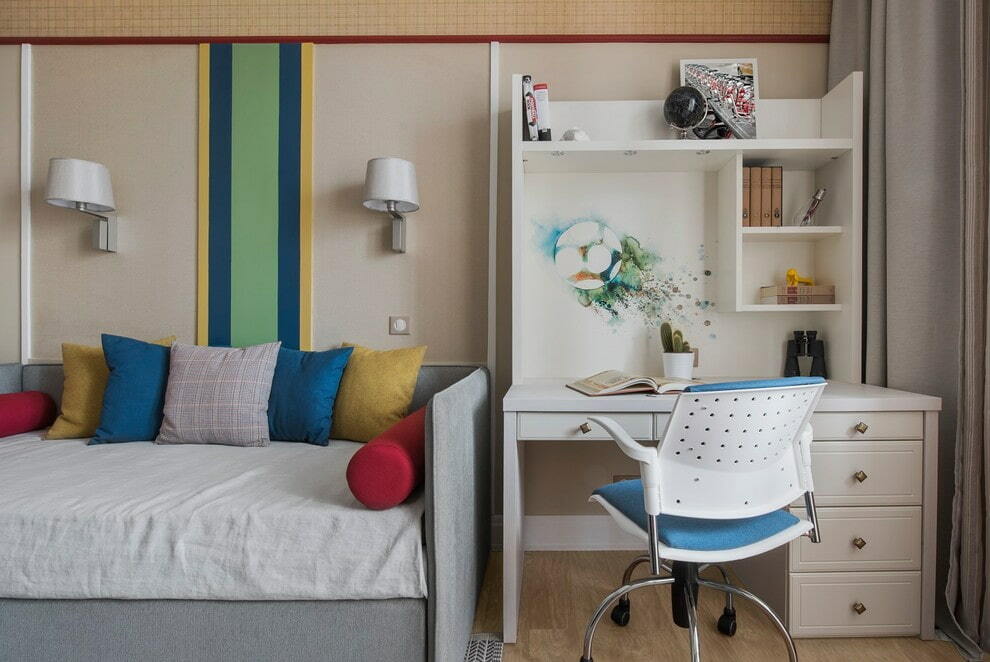
A table with add-ons will provide storage space for school supplies
Table materials
Typically, in the manufacture of children's educational furniture, manufacturers use five types of material: solid wood, composite chipboard, MDF, plastic, metal. The latter is used mainly for the frame of structures and all kinds of fittings. More about the rest!

Stylish writing desk with a wooden table top on a forged metal frame
Chipboard
The optimal material for a school table in a children's room in a combination of price / quality is chipboard. Smart technologies make it completely safe for consumers. Unlike chipboard, when buying furniture from chipboard, you should require a quality certificate. Since during the manufacture of such options for chipboards, a lot of harmful substances (phenol, formaldehyde, etc.) are used. In terms of pricing, both options are superior to solid wood. But they are inferior to the latter in terms of durability and strength, although manufacturers give a guarantee of 10-15 years.
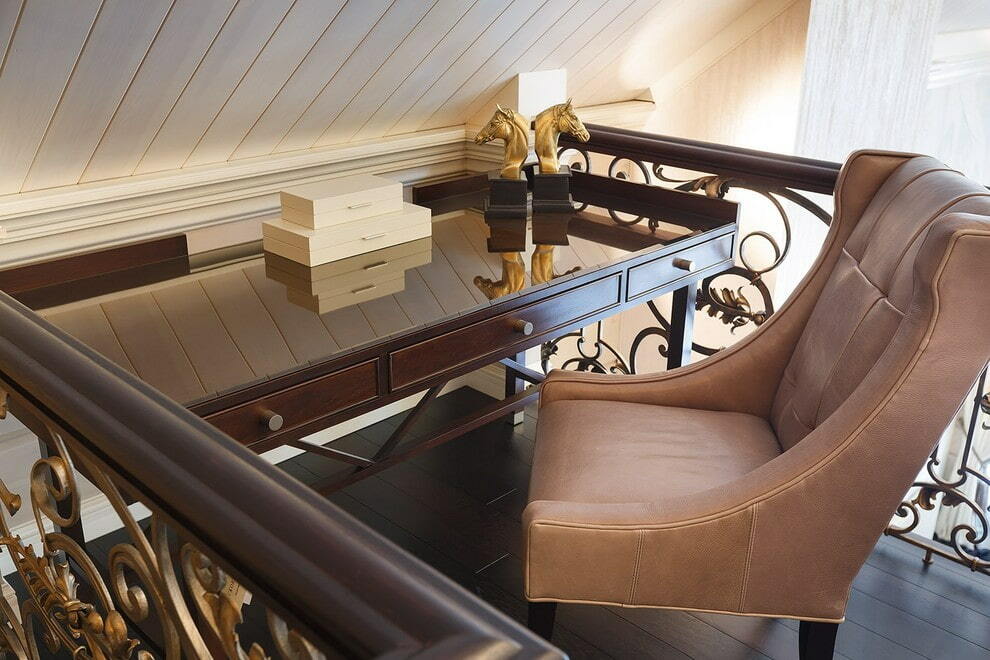
Laconic model based on chipboard with polished top and drawers

A writing desk with decorative lighting will interest a teenage child
MDF
Another material produced from waste by gluing wood chips under high pressure is MDF. A table made of this plate has a fairly high quality index, has a moderate cost, and has all the characteristics of furniture made of natural wood, but outwardly it may look about the same as a desk made of array. In addition, during the production of MDF panels, less chemicals are used, which is an indisputable advantage when choosing products for children.
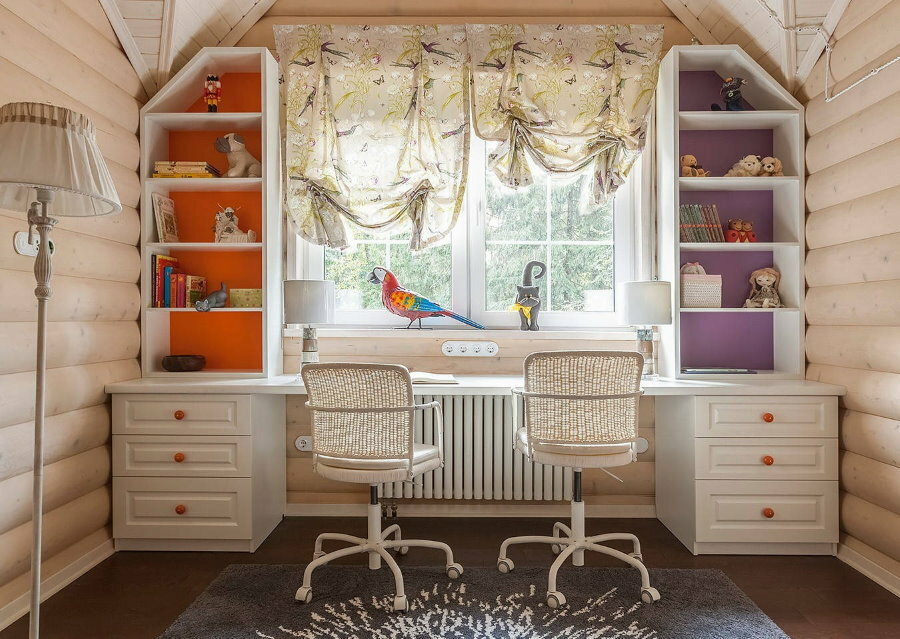
Spacious MDF table with comfortable side tables and additional shelves
Solid wood
The most beautiful children's tables and school desks are made of solid wood. These models are certainly expensive, but absolutely safe, durable and of high quality. Wood has the highest strength characteristics, so it is likely that it is almost obvious that it will be exploited not only by children, but also by grandchildren. Since wood is environmentally friendly in itself, it remains to be convinced of the quality of the varnish or paint used before buying. Toxic substances can cause allergic reactions.
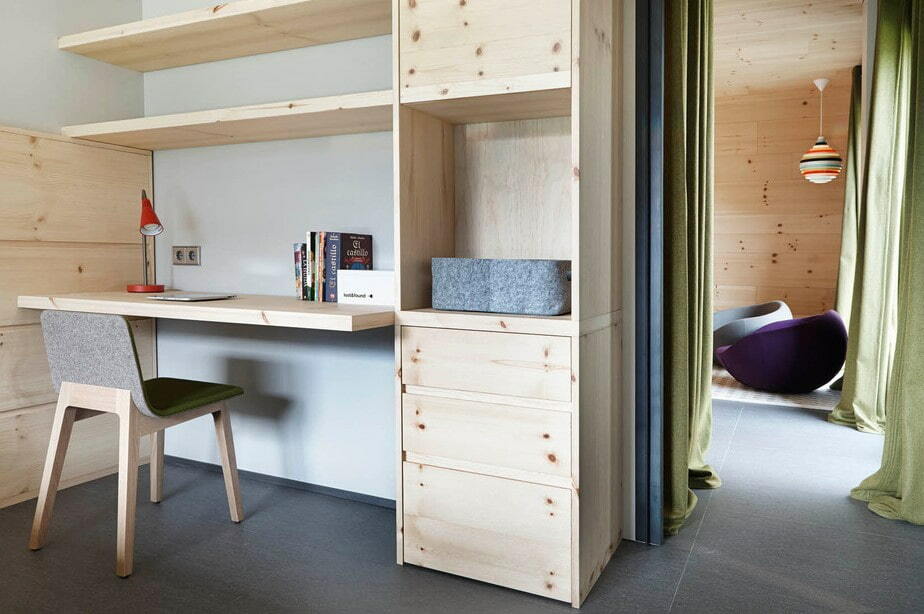
Built-in wooden table in the interior of the boy's room
Wooden furniture has one drawback. According to experts, an expensive solid wood table runs the risk of being spoiled by the "rock painting" of a child or adolescent already in the first year of life. The operating rules should be explained to the little user immediately after the purchase.

More practical are tables made of combined materials, in which wood is used for the body, and the table top is made of sheet material with a solid surface.
Plastic
Plastic tables for children's rooms are rare, more actively such models are used to equip the play area of preschoolers. According to their characteristics, plastic desks are equal to the previous versions of wood-based materials. But only if a good grade of plastic was used in the manufacture. In some cases, unscrupulous manufacturers use toxic and fragile material, thanks to which furniture looks bright and colorful, but completely unsafe.
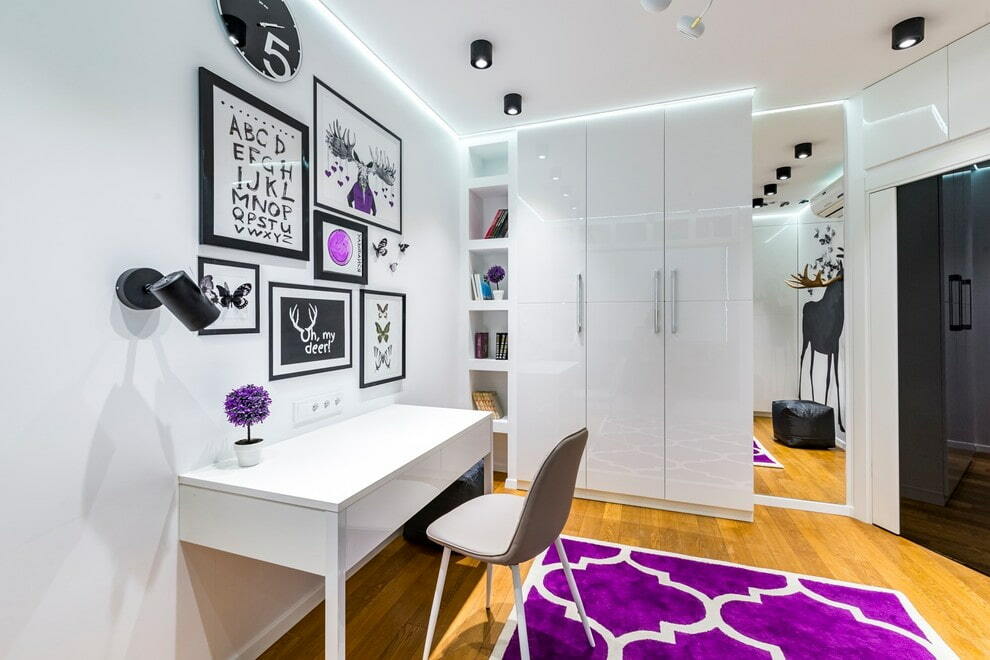
White plastic table in the room of a school-age girl
Options for the location of the desk in the interior of the children's room
The student's desk is a daily used piece of furniture. Therefore, it is worth installing it correctly, in accordance with all safety requirements:
- regardless of the size of the room, the child's workplace should be sufficiently illuminated;
the best option is a side light source; - when the table is located by the window on a white day, you will not need additional lighting devices;
- the minimum distance from the heating radiator is 20 cm;
- the place of the corner table is in the corner as close as possible to the window;
- for a bedroom of two children, a table by the window opening with one tabletop, but two workplaces is suitable.
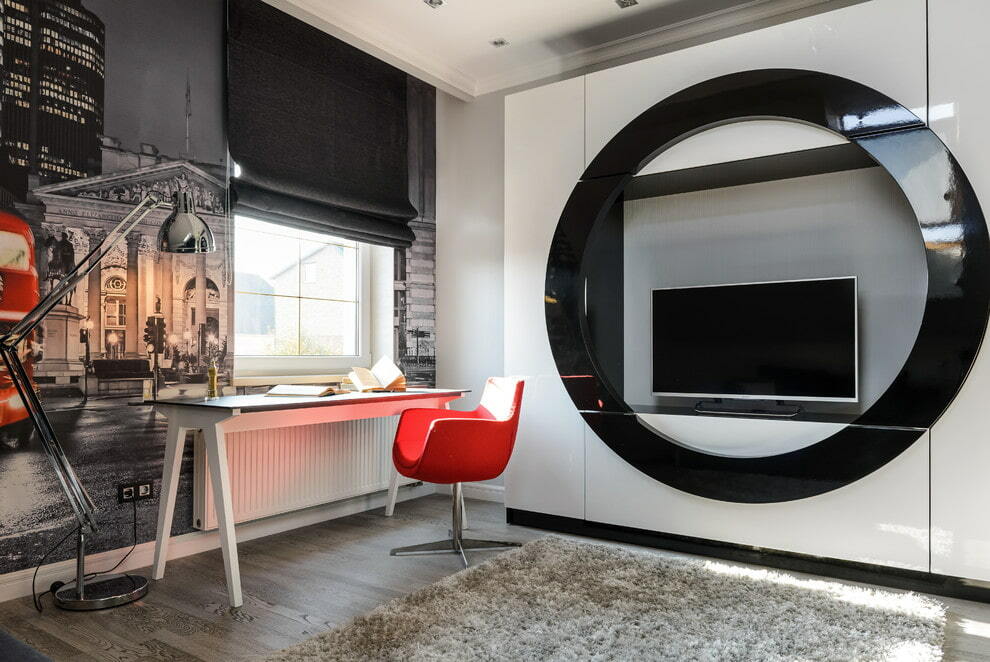
The location of the table by the window of the room provides a sufficient amount of natural light
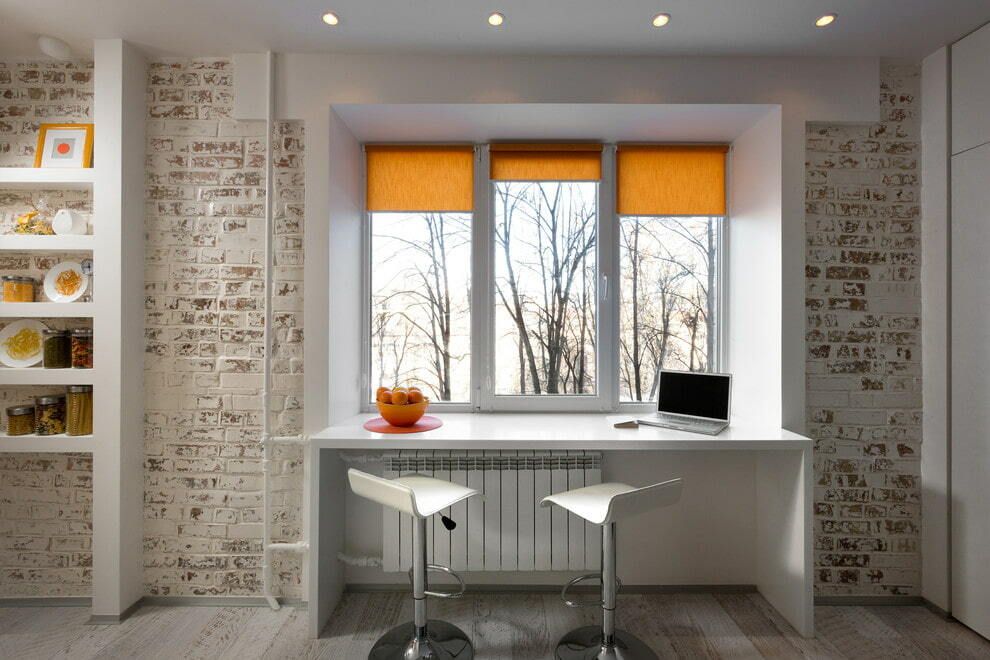
Built-in sill table helps save space
When installing a children's corner, in which the desk is located under the second tier, it is necessary to install several sources of additional lighting.
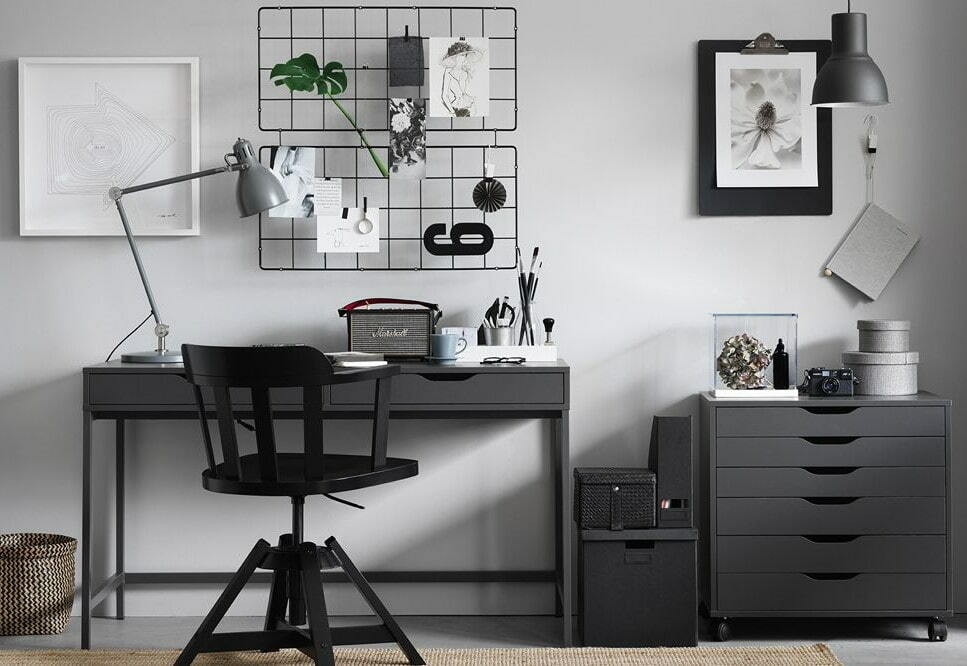
Gray table with drawers in a Scandinavian style teenage room

Built-in full-wall writing desk in a school-age boy's room
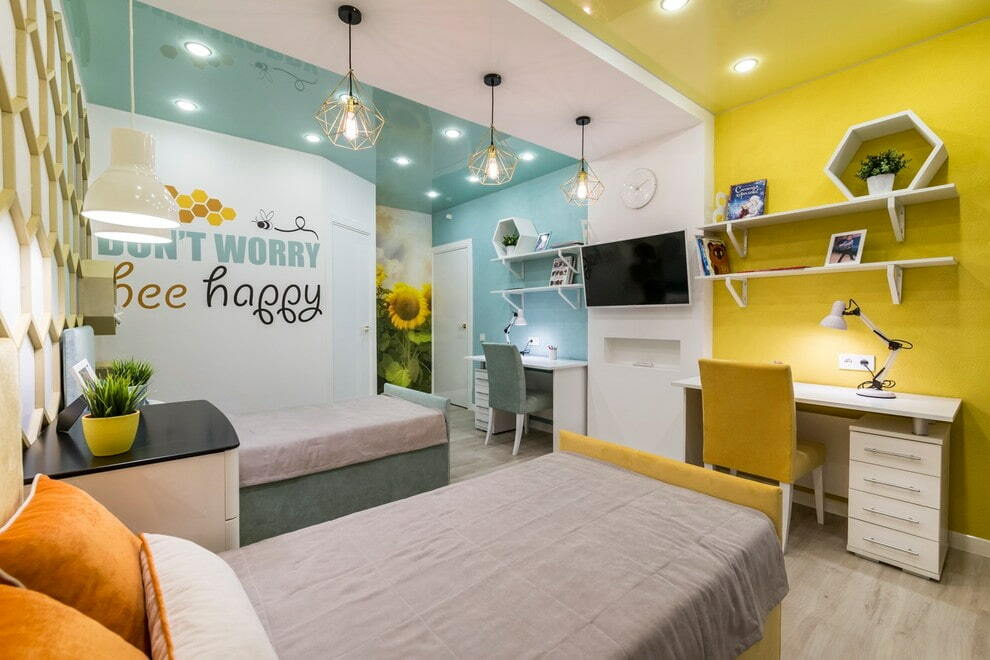
The photo shows a good example of organizing jobs in a room for two children.
When buying a children's school table, you should not focus solely on the cost or aesthetic ability of a piece of furniture to emphasize the existing interior of the room. Much more important is the convenience, practicality, functionality, quality and durability of the child's workplace. It is good that in modern models all of the above factors do not exclude each other, but complement each other (with a wise choice, of course). In confirmation of this, there are numerous photographs of the design of a children's room with a desk.
